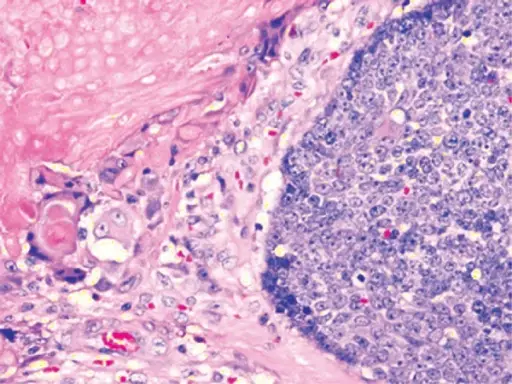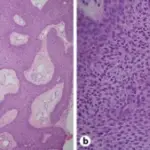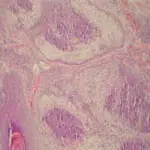Pilomatricoma is also known as calcifying epithelioma of Malherbe is a benign tumor of the appendages in the hair follicles mainly on the face and the upper extremities.
What is the Pathology of Pilomatricoma?
The pathology of pilomatricoma is the scientific study of the conditions affecting the hair follicles.
-Etiology: The cause of pilomatricoma is genetic mutation mostly found in the hair matrix.
-Genes involved: CTNNB1 gene.
-Pathogenesis: The sequence of events that lead to pilomatricoma is due to the genetic change of the CTNNB1 gene which causes suppression of the normal process of cell death.
-Morphology: The morphology associated with pilomatricoma shows a purple-colored lesion that is slow-growing found on the head and neck.
-Histology: The histology associated with pilomatricoma shows three features, the areas of calcification, outer basophilic cells, and inner shadow cells.
How does Pilomatricoma Present?
Patients with pilomatricoma typically affect mostly children but may also be seen in adults according to recent studies. It is commonly seen in females than in males. The symptoms, features, and clinical findings associated with pilomatricoma include a solitary nodule, highly asymptomatic, non-tender to touch, and slow-growing can become painful only when there is formation of an ulcer.
How is Pilomatricoma Diagnosed?
The pilomatricoma is diagnosed by physical examination, x-rays, ultrasound and at some point, biopsy is done.
How is Pilomatricoma Treated?
The pilomatricoma is treated the main treatment option is total surgical excision of the nodule and if the immediate skin is involved it may be scraped off too.
What is the Prognosis of Pilomatricoma?
The prognosis of pilomatricoma is good with proper management and care.



